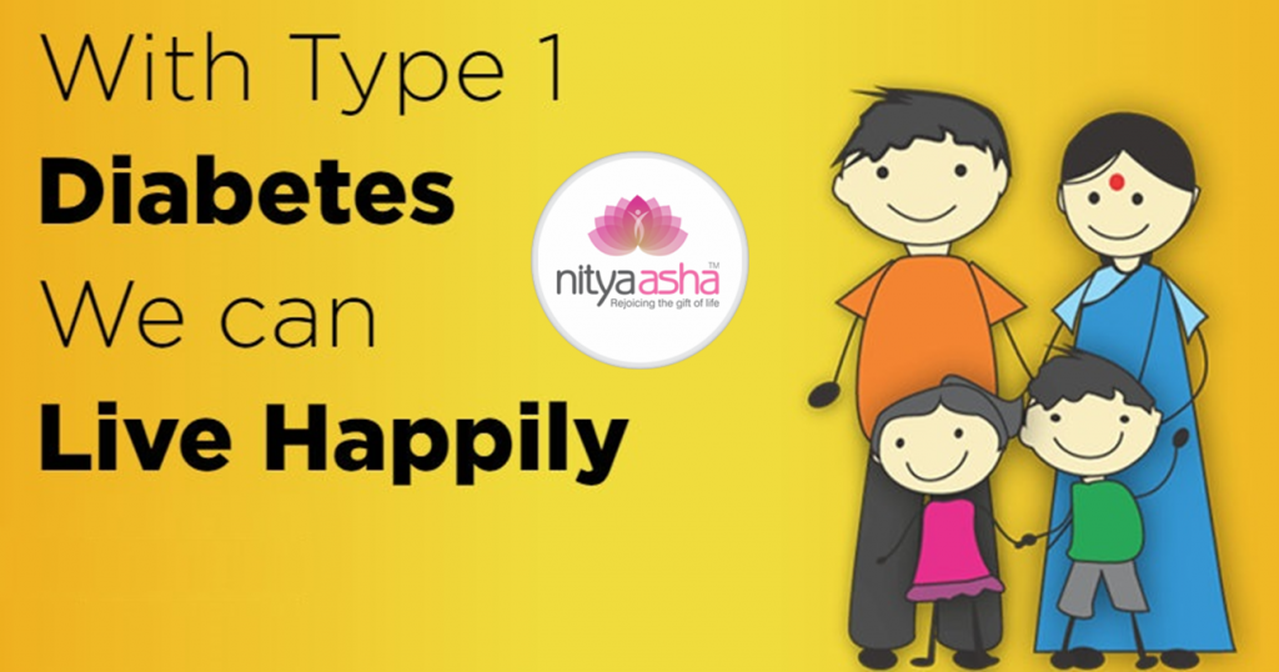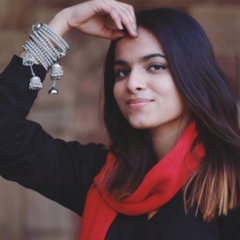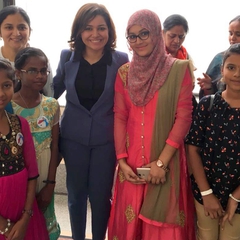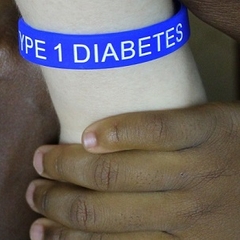
Interview: Diabetes in India
15 Jun 2014, 5:20 p.m. in Global Stories, Interviews by Elizabeth Pfiester
I have said it before, but I absolutely love finding new organizations around the world that support people with Type 1 diabetes. It is one of the reasons why I started T1International in the first place, so that we can learn and share and support to make the world better for people living with diabetes. Not only does Nityaasha Foundation focus on Type 1 diabetes, but it helps children and their families in particular in locations where there is truly a huge need for support.
I caught up with Anuja Shams, the Project Director at the foundation. Anuja explained how and why the foundation was formed; the major challenges faced by children with Type 1 diabetes in the western region of India where the foundation operates, as well as how local and global people can get involved and help support the foundation and its goals. Thanks so much to Anuja for taking the time to answer my questions and spread more awareness about diabetes around the world.
What is the Nityaasha Foundation?
Nityaasha Foundation is a registered charitable trust, founded by Mr. Farook Merchant & Messung Group of Companies, with a Managing Committee comprised of eminent and experienced members of society. Nityaasha commenced operations on 25th July, 2013 in Pune, India. The Foundation focuses on children with Type 1 diabetes, between 0-18 years of age from the economically weaker section of society.
Vision: To provide an equal opportunity for all to cherish the gift of life.
Mission: To bestow healthy life by fulfilling the medical needs of the underprivileged through holistic support.
Why do you think it is important that the Nityaasha Foundation exists?
The importance of its existence is that its primary focus is to provide medical aid to children from the economically weaker section of society to enable them to get an equal opportunity to progress in life. The Foundation provides free medical aid, like insulin, blood glucose test strips, lancets, syringes and glucometers. It also takes care of their pathology tests, annual eye and dental check-ups. The Foundation aims at providing holistic support with close monitoring through regular follow-up phone calls, home visits, school visits, diet and social counseling to keep the children and their families motivated to deal with this disorder. Nityaasha Foundation also works towards equipping families with the necessary information and motivation to deal with Type 1 diabetes by providing a support platform where in families can reach out to each other. The foundation is keen on taking care of responsive families who are progressive, cooperative and have a potential to increase their child’s quality of life.
Part of your aim is to raise awareness and advocate for children living with diabetes, what would you say are some of the biggest obstacles for people with type 1 diabetes in India?
The biggest obstacles for people with Type1 Diabetes in India, especially from the underprivileged section of society, are:
- Illiteracy & lack of Education: In India there is very limited information and awareness on Type 1 Diabetes. Above all, if the family is illiterate and with a limited source of income, the condition becomes worse and is unaffordable. Many a times the child is admitted in the hospital in a critical condition due to mere ignorance and negligence.
- Lack of Medical facilities in Remote Areas (rural): Families, who stay in remote areas, are deprived of basic emergency treatment due to lack of medical facilities available.
- Denial about Type1 Diabetes: People do not understand or accept the fact that this is a lifelong disorder which can be controlled by proper management.
- Storage Facilities: Some places, especially in Maharashtra (a state in the Western region of India), the climate is very hot during summers. It becomes very difficult for the families to store insulin in a cool place and maintain the cold chain. Most of the families cannot afford to buy a refrigerator or pay for the electricity bills. Few families who own a refrigerator also face a problem in maintaining the cold chain due to regular power cut or fluctuating power supply
It sounds like there are many difficulties faced by families with a person living with Type 1 diabetes. Can you explain a bit more how affordability of insulin and supplies is an issue?
The families from the lower income group cannot afford to purchase insulin and other monitoring devices like strips, lancets, etc. They only purchase basic supplies and go for necessary checkups/ pathology tests advised by the Doctor whenever funds available. Many a times while waiting for the funds the children end up in a serious medical emergency which worsens their financial condition and they go in debt.
Your Facebook page often shares images that help educate people about Type 1 diabetes. Can you tell me a bit about who makes the images and what you hope people will gain from seeing them?
We sustain a theme of the month in which we take a topic on Type 1 diabetes to educate our children and their caretakers during Clinic Visits and Home Visits. As per the topic of each month, we provide information and advice which is approved by our doctor and it is made into images by the agency that takes care of our Social Networking. The information put on Social Media and website is meant for a target audience from any strata of the society who seek to gain knowledge on Type 1 diabetes for the welfare and better management of this disorder.
What kind of progress do you hope to see in the future, and through the foundation, for children with Type 1 diabetes?
Currently, 115 children are registered with Nityaasha. In future we look forward to enrolling more needy children to take benefit of our services. Nityaasha aims to provide holistic support to these children to enable them to lead a normal healthy and fruitful life. We don’t want any child to be a victim of this fatal disorder due to unavailability of insulin supply and lack of information about managing a crisis like a high or low blood sugar.
What is the best way for people to help or get involved in the Nityaasha Foundation and make a difference to its cause?
There are several ways to be involved with Nityaasha:
- Giving a donation
- Sponsoring a child or children
- Sponsoring an event (educational or entertainment) for fund raising
- Contributing through knowledge: Experienced Doctors/Diabetes Educators/Dietitians can share things like Diabetes contents, recipes or U-Tube videos on various topics relevant to Type 1 diabetes
- Mentoring: People with Type 1 Diabetes can share their experiences and motivate our children through mentoring sessions to help them cope up with this disorder
- Joining or leading a support group: Be a part of the backup group and get a volunteer to help us in arranging various activities
Be sure to check out the Nityaasha Foundation web site at www.nityaasha.org.






